Caviar – More Than Just Sturgeon Eggs
Caviar, often regarded as one of the world’s finest delicacies, is a luxurious ingredient that has graced the tables of royalty and gourmands for centuries. Harvested from certain fish species’ eggs (or roe), primarily sturgeon, caviar is prized for its rich, briny flavor and delicate texture.
While traditionally associated with formal occasions and gourmet dining, it has transcended its historical role. It is now a part of modern cuisine, evolving to suit a wider range of palates and occasions.
In this post, I’ll explore the origins of caviar, the different types available, and how to incorporate it into your home cooking. From classic pairings like blinis and crème fraîche to creative appetizer uses, learning to serve and enjoy it can elevate any meal or gathering. Whether you’re a first-time taster or a seasoned connoisseur, understanding the nuances of this exquisite ingredient will deepen your appreciation for its unique flavor profile.
Join me as I explore the world of caviar, uncovering what makes this delicacy so unique and how you can enjoy it beyond traditional celebrations. With the right tips and pairing ideas, it can add a touch of elegance to your culinary repertoire.
3 Main Types of Caviar
The three most popular types of caviar come from three different sturgeons, thus creating a common grading system for buying these highly prized eggs. Each has unique qualities, but which one you like depends on your tastes.
Beluga
Beluga is one of the most renowned and luxurious types of caviar, harvested from the beluga sturgeon (Huso huso), which is primarily found in the Caspian Sea and, to a lesser extent, the Black Sea. It is highly regarded for its large, delicate eggs and rich, buttery flavor.
Key Characteristics:
- Egg Size and Color: Beluga is known for its notably large eggs, ranging from 3 to 4.5 millimeters in diameter. The eggs’ color can vary, typically ranging from light gray to nearly black, depending on the individual fish and its diet.
- Flavor Profile: Beluga caviar is celebrated for its luxurious, complex flavor. It has a smooth, creamy texture with a rich, briny taste that is often described as buttery and slightly sweet. The flavor profile is considered one of the most exquisite caviar types.
- Texture: The eggs have a soft, velvety texture that melts in your mouth, releasing their rich flavor.
Sustainability:
Due to overfishing and habitat loss, beluga sturgeon populations have significantly declined, leading to strict regulations on harvesting wild beluga caviar. In many regions, including the United States, the sale of wild-caught beluga caviar is banned. As a result, sustainable aquaculture practices are becoming more common, with some farms raising beluga sturgeon under controlled conditions.
Serving Suggestions:
Beluga caviar is typically chilled, served simply with traditional accompaniments like blinis, toast points, or crème fraîche. It is often reserved for special occasions, reflecting its luxury status. The delicate flavor of beluga caviar makes it a standout ingredient that enhances gourmet dishes, seafood, or egg-based preparations.
Osetra
Osetra caviar is another highly esteemed type, harvested from the Osetra sturgeon (Acipenser gueldenstaedtii), which is primarily found in the Caspian Sea and the Black Sea. Known for its distinctive flavor and color, Osetra caviar offers a delightful combination of nuttiness and a rich, briny taste that appeals to many caviar enthusiasts.
Characteristics of Osetra Caviar:
- Egg Size and Color: Osetra eggs are medium-sized, typically 2.5 to 3.5 millimeters. Depending on the individual fish and its diet, the color can vary significantly, ranging from dark brown and gray to golden yellow.
- Flavor Profile: Osetra caviar is celebrated for its complex flavor, often described as nutty with a hint of sweetness. This unique taste can vary between batches and is influenced by factors like the sturgeon’s diet and habitat.
- Texture: The eggs have a firm yet delicate texture, with a satisfying pop when bitten. When bitten, they release their flavorful brine.
Sustainability:
As with other types, concerns about sustainability and overfishing have increased the production of farm-raised Osetra caviar. Many producers now focus on responsible aquaculture practices to ensure the preservation of sturgeon populations and their habitats.
Serving Suggestions:
Osetra caviar is often enjoyed alone or with simple accompaniments like blinis, toast points, crème fraîche, or even just a sprinkle of sea salt. Its rich flavor makes it a versatile ingredient in gourmet dishes and an exquisite addition to any special occasion.
Sevruga
Sevruga caviar is another premium variety sourced from the Sevruga sturgeon (Acipenser stellatus), which is primarily found in the Caspian Sea and the Black Sea. While it is not as well-known as Beluga or Osetra caviar, Sevruga is highly regarded for its unique characteristics and intense flavor.
Key Characteristics:
- Egg Size and Color: Sevruga eggs are smaller than those of Beluga and Osetra, typically measuring about 1.5 to 2.5 millimeters in diameter. They are usually dark gray to black and glossy.
- Flavor Profile: Sevruga caviar is known for its bold, briny flavor, often described as having a pronounced sea essence. It is less creamy than Osetra and has a more intense, slightly fishy taste, making it popular among those who enjoy robust flavors.
- Texture: The eggs have a firm texture that provides a satisfying burst when bitten into, releasing a solid briny taste.
Sustainability:
Like other sturgeon species, the Sevruga sturgeon has faced significant threats due to overfishing and habitat loss. As a result, there are regulations on harvesting wild Sevruga caviar, and many producers have turned to sustainable aquaculture methods to ensure the species’ future.
Serving Suggestions:
Sevruga caviar is typically enjoyed chilled and can be served in various ways. It is commonly paired with traditional accompaniments like blinis, toast points, or crème fraîche. Its bold flavor also makes it a great addition to gourmet dishes and sauces, as well as a topping for eggs and seafood.
Other Types of Caviar
In addition to Beluga, Osetra, and Sevruga, there are several other types of caviar sourced from various sturgeon species and even non-sturgeon fish. Here are some notable varieties:
1. Sterlet Caviar
- Source: Sterlet sturgeon (Acipenser ruthenus).
- Characteristics: Known for its small, glossy eggs, typically light to dark gray. Sterlet caviar has a delicate, slightly nutty flavor and is often considered a delicacy in its own right.
2. Hackleback Caviar
- Source: Hackleback sturgeon (Scaphirhynchus platorynchus), found primarily in North America.
- Characteristics: This caviar has small, dark eggs (black to dark gray) and a rich, robust flavor. It is more affordable than traditional sturgeon caviar and is gaining popularity among consumers.
3. American Paddlefish Caviar
- Source: Paddlefish (Polyodon spathula), native to North America.
- Characteristics: Known for its small, pearlescent gray to black eggs, paddlefish caviar has a creamy texture and a slightly milder flavor compared to other sturgeon caviars.
4. Whitefish Caviar
- Source: Whitefish (Coregonus species).
- Characteristics: This caviar is often smaller and lighter in color (usually a pale yellow or golden hue). It has a mild, slightly sweet flavor and is commonly used in gourmet dishes and as a topping.
5. Salmon Roe (Ikura)
- Source: Salmon species (e.g., Pacific salmon, sockeye).
- Characteristics: Salmon roe consists of larger, bright orange to red eggs. They have a strong, briny flavor and are often used in sushi, sashimi, and various Asian dishes.
6. Trout Roe
- Source: Trout (Oncorhynchus species).
- Characteristics: Trout roe has a similar appearance to salmon roe but is typically smaller and more delicate. The flavor is mildly briny and slightly sweet, making it a popular choice for garnishes.
7. Caviar Substitutes
- Source: Various fish (e.g., sea bass, flying fish).
- Characteristics: These alternatives mimic the appearance and texture of traditional caviar but are not made from sturgeon. They can vary in flavor and are often used as a more affordable option in culinary applications.
Each type of caviar offers its own unique flavor and texture, allowing chefs and home cooks to explore a wide range of culinary possibilities.
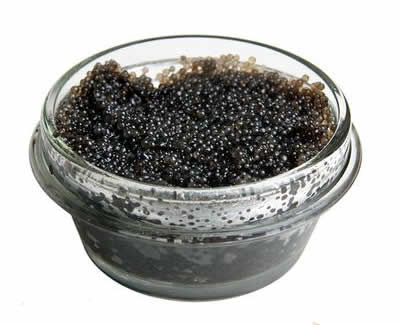
How to Buy Caviar
Caviar is processed by straining and sorting the eggs by size and color. A mild salt (Malossol) is added to the eggs to prevent freezing. The eggs are then packed in 4 pound tins containers and exported.
An importer repackages the caviar into smaller tins or jars you can purchase at high-end markets. The typical size is 1-ounce containers.
IMPORTANT – Beluga caviar always comes in blue tins, Osetra in yellow tins, and Sevruga caviar in red tins.
Imported caviar is now available. Check out my post on this topic here.
Do Your Homework – This stuff is expensive, so learn everything you can about the various types of caviar and their different grades.
Find a distributor of imported caviar you trust, and don’t be afraid to ask questions based on what you’ve learned. If they don’t want to answer your questions, find someplace else to spend your money.
Buy Only Fresh Caviar – Because caviar is extremely perishable, once it is imported and repackaged, the shelf life is only about 3 to 4 weeks unopened. Once opened, it’s good for about three days and that’s if refrigerated at an ideal temperature of 30 degrees F. So ask about dates.
Only Buy As Much As You Are Going To Serve – There is basically no shelf life on expensive caviar, two or three days, so plan accordingly.
Don’t Buy Caviar in a Supermarket – Generally, most caviar sold in supermarkets is not what you want. You must go to a high-end gourmet store or establishment specializing in caviar.
Lucky for us, there are places online now that sell quality caviar. Either way, ensure the establishment you are dealing with knows about caviar.
Look for the term “Malossol” – it means lightly salted and indicates that the caviar is high-end.
Taste Before Buying – Not always possible, especially over the Internet, but some top dealers will allow you to sample before purchasing.
Look for Discounts – The holidays are a big caviar buying time of the year, and you often find caviar on sale. Just be careful you are not buying old or inferior products.
Don’t Buy Black Market Caviar – there is more and more illegal caviar on the market today, and it may eventually ruin the availability of sturgeon caviar sometime in the near future. Be sure to ask your supplier if the caviar you buy is legally imported.
Serving Caviar
How Much To Serve – depends on who you are serving it to, but figure 1 ounce per person if serving alone and 1/2 ounce per person if serving on top of hors d’oeuvres or garnishes for canapes.
How to Serve It – Keep it simple and let the caviar do the talking. Placing the tin in a bed of crushed ice looks elegant and helps keep the fragile eggs fresh.
Mother-of-Pearl Spoons – I have read you should only use natural materials for serving caviar, like mother-of-pearl, bone, and horn because metal will oxidize the caviar when it comes in contact with it. I don’t know how that is true, especially since caviar is stored in metal tins.
I have also read that this is only true with sterling silver. Either way, the spoons are not that expensive, especially when considering the caviar’s cost. Plus, they look great next to the tin of caviar.
What to Serve – The classic accompaniments are toast points, potatoes & blini (small pancakes). Sometimes, you will find creme fraiche served, too. I suggest “less is more”. Let the natural briny flavors of the expensive caviar assault your taste buds. Don’t cover them up with a bunch of distractions.
What to Drink – The classic drink with fresh caviar is ice-cold vodka because of its neutral taste. Some people enjoy a glass of champagne with their caviar. It’s up to your personal preferences. Try to avoid any drink that will alter or overwhelm the clean flavors of the caviar.
Storing Fresh Caviar
Proper storage of caviar is essential to maintain its quality, flavor, and texture. Here are the best ways to store caviar:
1. Refrigeration (Short-Term Storage)
- Keep It Chilled: Caviar should always be stored in the coldest part of your refrigerator, ideally between 28°F and 32°F (-2°C to 0°C). Avoid the door, where temperatures fluctuate.
- Seal the Container: If the caviar comes in a tin or jar, keep it tightly sealed to prevent exposure to air, which can degrade the quality.
- Use Plastic Wrap: If the original packaging is not airtight, transfer the caviar to an airtight container and cover it with plastic wrap to minimize air exposure.
2. Serving and Enjoying
- Serve Chilled: When serving caviar, keep it on ice or in a chilled bowl to maintain the ideal temperature. Avoid letting it sit at room temperature for too long.
- Use the Right Utensils: When serving caviar, use non-metallic utensils (like mother-of-pearl, plastic, or glass), as metal can alter the flavor.
3. Freezing (Long-Term Storage)
- Freezing Caviar: While freezing is generally not recommended for high-quality caviar due to potential texture changes, seal it tightly in an airtight container or vacuum-sealed bag if necessary.
- Portion Control: Consider freezing smaller portions to avoid repeated thawing and refreezing, which can further affect quality.
- Thawing: To thaw, move the caviar to the refrigerator and let it gradually reach temperature. Do not use a microwave or hot water, which can ruin the texture.
4. Consume Quickly
- Freshness Matters: Once opened, caviar should ideally be consumed within 3 to 5 days for the best taste and quality. Check the expiration date on the package before purchasing and consuming.
5. Avoid Temperature Fluctuations
- Consistent Temperature: Avoid temperature fluctuations by minimizing the time caviar spends outside of refrigeration. Keeping it in a consistent, cool environment helps maintain its quality.
By following these storage tips, you can ensure your caviar remains fresh and flavorful for as long as possible.
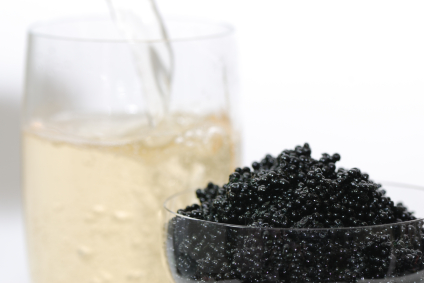
The Only American Beluga Farm
Very interesting video:
Blini Recipe
Ingredients
- 1 envelope active dry yeast 2¼ teaspoons
- 1 cup warm water 115°F.
- 2 teaspoons sugar
- ½ cup all-purpose flour
- 2 cups warm milk or a little more as needed
- 4 tablespoons unsalted butter melted
- 2½ cups all-purpose flour
- 2 egg yolks beaten
- 4 tablespoons sugar or more to taste
- 2 teaspoons salt or more to taste
- 2 egg whites
- peanut oil for frying
- melted butter for brushing
Instructions
- In a small bowl, stir together the yeast, warm water, sugar and first measure of flour. Cover and set aside until doubled, about one hour.
- Beat in all the rest of the ingredients, except for the egg whites, using the lesser amount of flour. Once incorporated, whisk until smooth and then cover. Set aside to rise until doubled in bulk, about 1½ hours.
- Stir the batter well again, recover, and let rise once more for about 45 minutes.
- Whisk the whites to soft peaks and fold into the batter. Don’t whip the egg whites before you are ready for them, as they won’t hold. Let the batter rest for another ten minutes.
- Heat a well-seasoned 8 inch cast iron skillet or heavy-bottomed nonstick skillet over medium heat.
- Rub the pan with peanut oil. Ladle in about ¼ cup of batter, tilting and swirling the pan to completely cover the bottom of the pan with a thin layer of batter. Cook until the top of the blin is bubbly and the bottom is golden brown.
- Carefully turn and cook the other side for about 30 seconds, brushing some melted butter on the cooked side.
- Repeat with another ¼ cup of batter. Taste this one (the first is generally for the cook) and check to see if it needs more salt or sugar. If the pancake breaks when you try to fold it, whisk the reserved ¼ cup of flour into the batter. If the pancake is too thick, whisk in a little more warm milk.
- Continue making blini until you have used all the batter. Serve hot or warm with crème fraiche and caviar.
- To make crème fraiche, whisk 2 tablespoons of buttermilk into 1 cup of heavy cream. If you can find it, use pasteurized, not ultra-pasteurized cream.
- Let the mixture sit out at room temperature until nicely thickened. This could take up to 36 hours, but check it every 12 hours.
- Once thickened, refrigerate until cold.

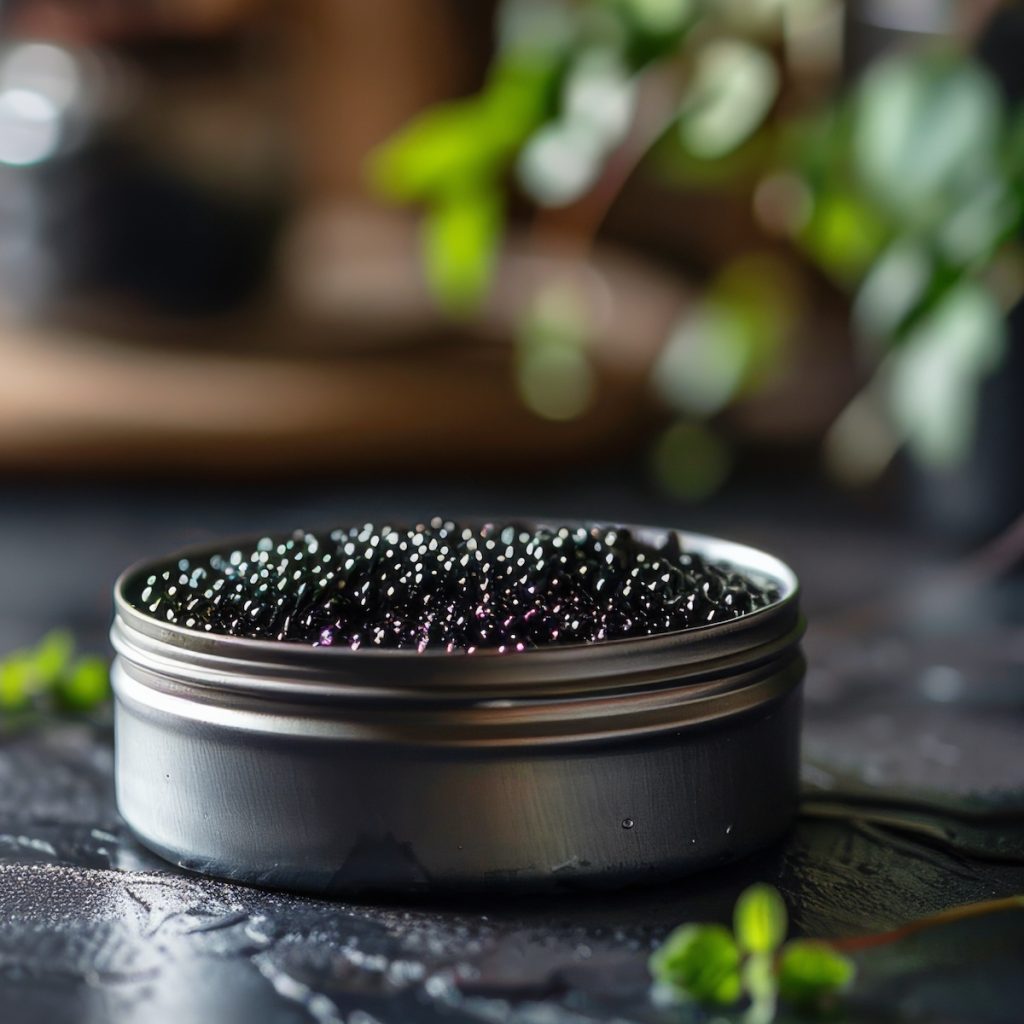
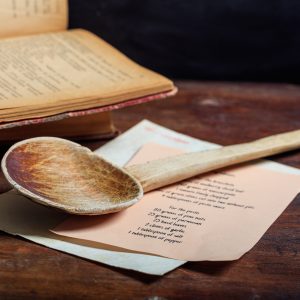

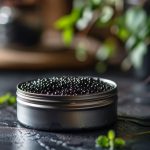
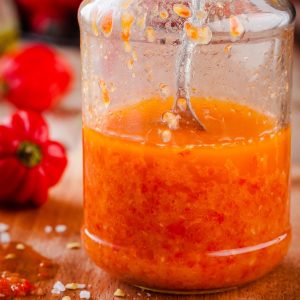
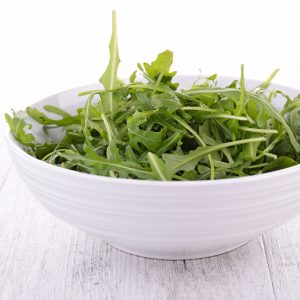



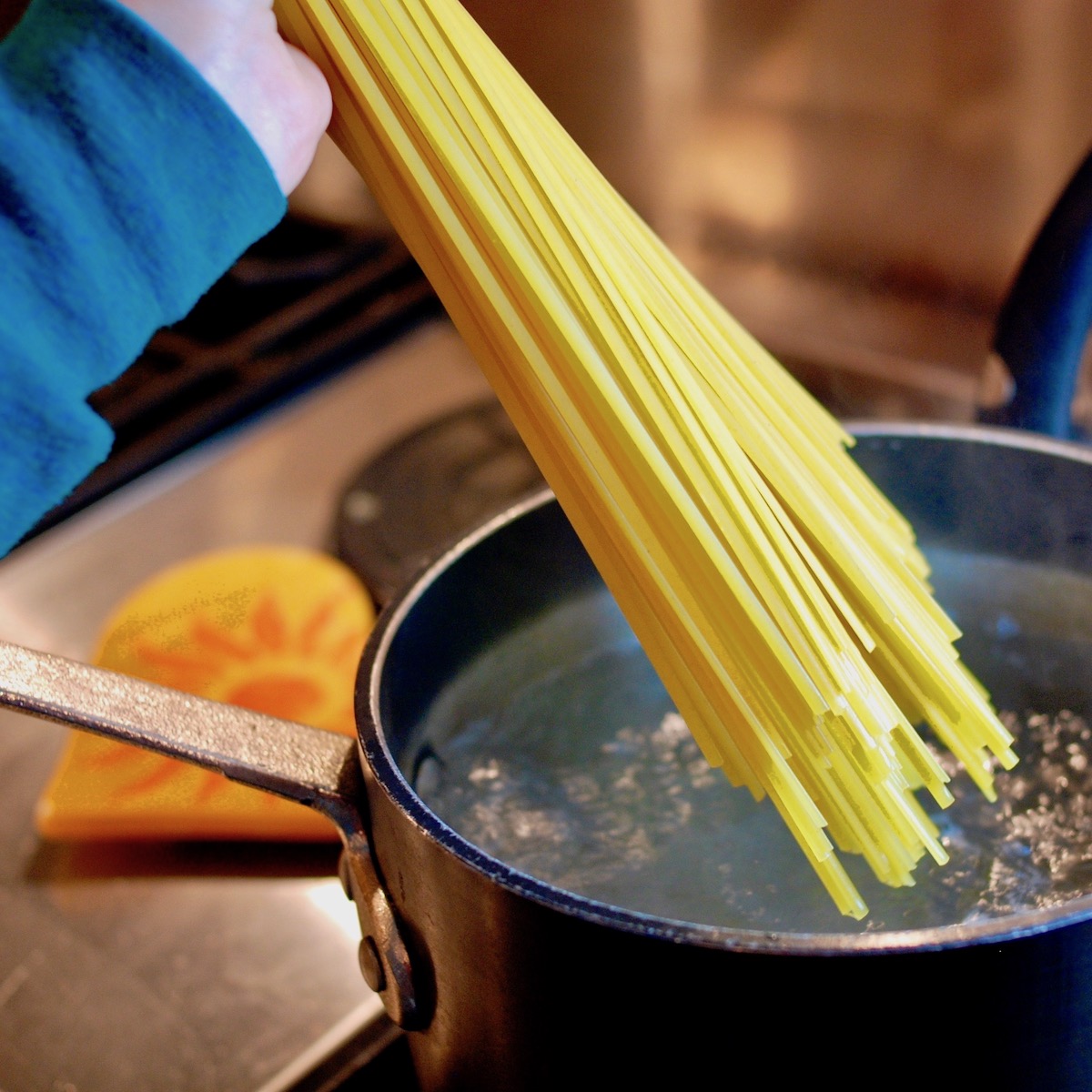
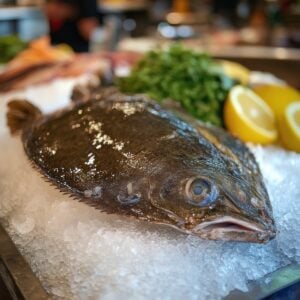
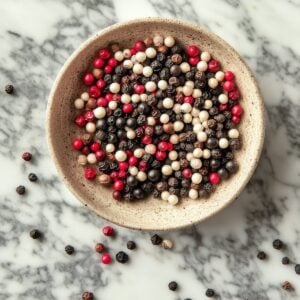


23 Responses
A also find interesting some other points, speaking about caviar.
First, about metal cutlery. Avoid if possible sterling silver. It changes the taste of caviar. The tin does not change caviar taste cause it is made for this product, it is not a singular tin at all.
Secondly, my suggestion. I enjoy much more having caviar on somebody else skin…Just “serve”, wait it gets skin temperature and eat it.
Thanks anyway for the helpful explanation!
Third, Don’t buy beluga, there is not real beluga in the market.
And finally, and maybe the most important….Try to read “CITES” legend written in the labels. It will tell you about date of production, country of origin, species, and if it has been manipulated or not.
I’ve found Black River Caviar out of Breckenridge Colorado to be an excellent retailer!
This article advises people to avoid buying the relatively inexpensive “Lumpfish Variety” of caviar roe that you see readily in most supermarkets on the shelf next to the cans of tuna and sardines. I totally disagree ! Not everyone has deep pockets and can afford the very high-priced, high-end varieties of sturgeon caviars. If you like caviar, or think you might, and want to try it, why deny yourself ? Salmon roe caviar is also readily available and affordable at about $ 8.99 for a 2 ounce jar. A little goes a long way and it is a great breakfast or brunch food. Serve it on a toasted bagel or bread, atop cream cheese, with sides of sliced ripe tomatoes, red onion, some olives, a good piece of cheese, etc. Many people think they do not like caviar…because they do not know how to use it ! If you want black or red caviar from lumpfish, look for the brand Roland. The grains are big, firm and not too salty. Avoid the Romanoff brand, the grains are small, salty, watery and mushy ! A jar of Roland roes in only about $7.99 for 2 ounces and goes a long way ! My feeling is that if you like salty foods and fish products like anchovies or sardines…you will love caviar, too ! However, not just spread on a dry cracker, you have to be creative and imaginative with it.
I agree totally with Madge ! I purchase the Roland brand red and black lumpfish for “caviar” in my local Western-Beef supermarket and love it. It only costs $6.99 for a 2 oz. (57g) jar and my guests think they are indulging in a super-expensive delicacy ! I store it in the refrigerator (however, product is not perishable),and always serve the glass jar cold on a bed of crushed ice in a nice bowl. We use it for weekend “high-end” brunch with smoked salmon, toast points (or bagels), GOOD,sharp Cheddar or Gouda cheese, fresh scallions, sliced ripe tomatoes, Greek olives, sliced red or white onions…whatever you like ! Believe me, I get no complaints and my friends and family devour it !
That all sounds great except for where you suggest you are fooling your guests into thinking they are having high-end caviar. Come clean girl, there’s no shame! I mean unless they’re snobs why would they care.
I do not think the writer you commented about was suggesting you”fool” your guests or was suggesting you be deceitful. If you buy the relatively inexpensive supermarket grade lumpfish “caviars” and serve them properly, you do not have to brag that it is “Beluga Sturgeon.” Most guests will not ask what kind of caviar is it, where did you buy it, or how much did it cost ?That is just rude and very offensive!
Or, just eat regular food that tastes great without needing to endanger a species and pretend like a tiny seafood pop rock is God’s best gift to the “rich” man!
Have only ever eaten supermarket caviar. Wasn’t aware that according to the caviar connoisseurs i was eating garbage. Ignorance is bliss but now that the elite have opened my eyes to reality, i’ll have to cross my fingers that the real deal will be on the menu at my companies next xmas party, otherwise i’ll have to stick with the garbage…
Im eating lumpfish caviar right now with crackers. Its delicious! Im assuming the real thing tastes 100 times better.
I have eaten top end Iranian caviar in the past. I found it enjoyable but not as amazing as some people would suggest. I have just eaten a 100 gram jar of Lidl De-Luxe Lump fish row with some Greek olives. It was just as tasty as the Iranian caviar but a lot more enjoyable for being a fraction of the cost.
To Tony, NO….you are not eating junk and price and clout are not always the determining factors if something is good or not!Lumpfish caviars can be excellent and a great value ! Do not let the pretentious”food-snobs” tell you what is acceptable and what is not. Sure, the extremely pricey Beluga and other rare sturgeon caviars are in a class by themselves….but at $ 350. and up per ounce, are out of reach for most people. NOTE: I went to a high-end wedding and they expensive Ostera black caviar there and the taste was not much different than the supermarket lumpfish roe at around $4.00 per ounce.Sure, it was better, creamier and more subtle,but look at the price difference! I mean,really, how much different or better can one fish egg be from another…and they are all preserved in salt…HELLO ?
Having had bit of the stuff here at high end Russian places in NYC and at a party in Moscow there is huge difference . The cheap stuff is harsh and gritty. The expensive is smooth silky and sublime. I would go with Roe ( ORANGE ) and not try to pass off the Beluga faux stuff. Blinis with cream fresh and a little egg or red onion is great. I am pretty certain I will never have the good stuff again, I will never go back to Russia, and most supermarket stuff is like wanting artisan produce cheese and settling for Wispride, DON’T DO IT!
Caviar sold in supermarkets is not what you are looking for. I don’t like to be told what I want or what I’m looking for.
I can’t afford “real” caviar. So what am I going to do? I just enjoyed eating the bottom line Romanoff lumpfish with crackers and creamcheese. And I had a nice laugh from some of the comments.
Don’t know high end caviar from the garbage, but my wife loved the jar of Romanoff Black Lumpfish caviar I bought her. She even makes her own caviar from salmon roe. I’m not crazy about her caviar, she loves it. That being said, I tried a little of the caviar I bought her, and it was pretty good. From what I read in the previous reviews, if you think I’m going to spend $350 and up for some fish eggs, I’ll stick to Romanoff Black Lumpfish! Actually, I’d really prefer a good hamburger! But we catch salmon every year, and the roe is cheap! So you all go ahead and spend however much you want, and we’ll just be satisfied with what we have, including hamburgers!
too funny.
I’m a bartender and my girlfriend is a teacher, so we’re definitely not rich… but we’re perfectly happy with a tin of romanoff, some toast points and a bottle of $15 bubbly.
This article says “avoid” the supermarket varieties of inexpensive lump-fish, capellin and whiting roe caviars and gives them a bad rap ! These usually cost less than $ 10. per 2 oz. jar,.However,not everyone can afford the exorbitant prices of “real” caviar. And while the article is geared to true caviar aficionados and high-end gourmets,the cheaper varieties can actually be very good and allow those on a budget to enjoy a very similar experience eating caviar and impressing their guests.
Great comment Wonda Anne. This post was geared more for people looking for a higher end caviar and does say the inexpensive lump fish and whiting roe is fine for cooking but will not be as good as more expensive caviar for serving on their own. Also, since I wrote this article, more and more supermarkets, especially those like Wegmans and Whole Foods are selling better quality inexpensive substitutions. I think when I wrote this post, I didn’t want people to buy supermarket alternatives and think it is anything like the more expensive stuff.
I was really just looking for something new to eat while I am working at home during Covid time. I find I am spending more on better quality coffee, sardines, tuna and the like during this period. The local international store sells salmon and pike eggs which I assume is probably for sushi. I can get Romanoff Black Lumpfish Caviar in the next town for less than $10. I can get more expensive caviar from the gourmet shop but I would be the only one eating it as my wife hates anything seafood and of course, we can’t have people over.
Is Wegman’s Osetra Caviar (in a blue tin) at ~$100/oz not the real thing?
Hi Michael, great question and I’m not sure. I wrote this post years ago when the U.S. Fish and Wildlife Service banned the import of all beluga products from the Caspian Sea. I think that is still the law but now you have companies around the world producing farm raised sturgeon with China being the largest producer. I did look at the Wegman’s website and found Caviar Russe Caviar, Salmon and Caviar Russe Caviar, Black Tobiko which are flying fish eggs but didn’t see the Osetra Caviar. There is an interesting article at Bloomberg back in June of 2019 that describes a company in Florida who hand-carried baby beluga sturgeon, each weighing 3 to 10 kilograms (7 to 22 pounds) on flights from Russia to Florida. It started an sturgeon aqua-farm and is now selling farm raised beluga sturgeon but it is very expensive. The article is worth checking out. I suggest you speak to the Wegman’s fishmonger where they sell the Osetra and ask them where it is from. I’m sure it will be farm raised and not from wild sturgeon. Please let me know what you find out.
I agree, I just bought Roland’s Red Lumpfish, and it took me less than two days to polish it off. I’ll be buying it again in the future, but for now, it was delicious. Totally worth it someone who can’t drop $100 on 2 oz of garnish.